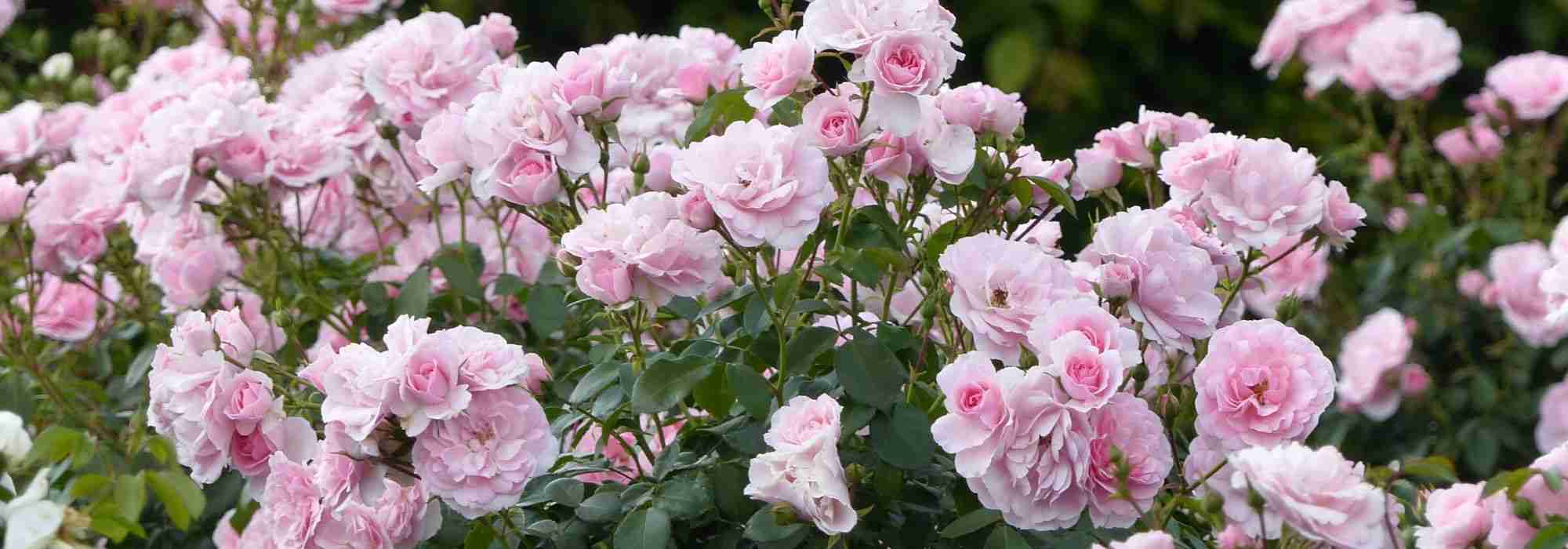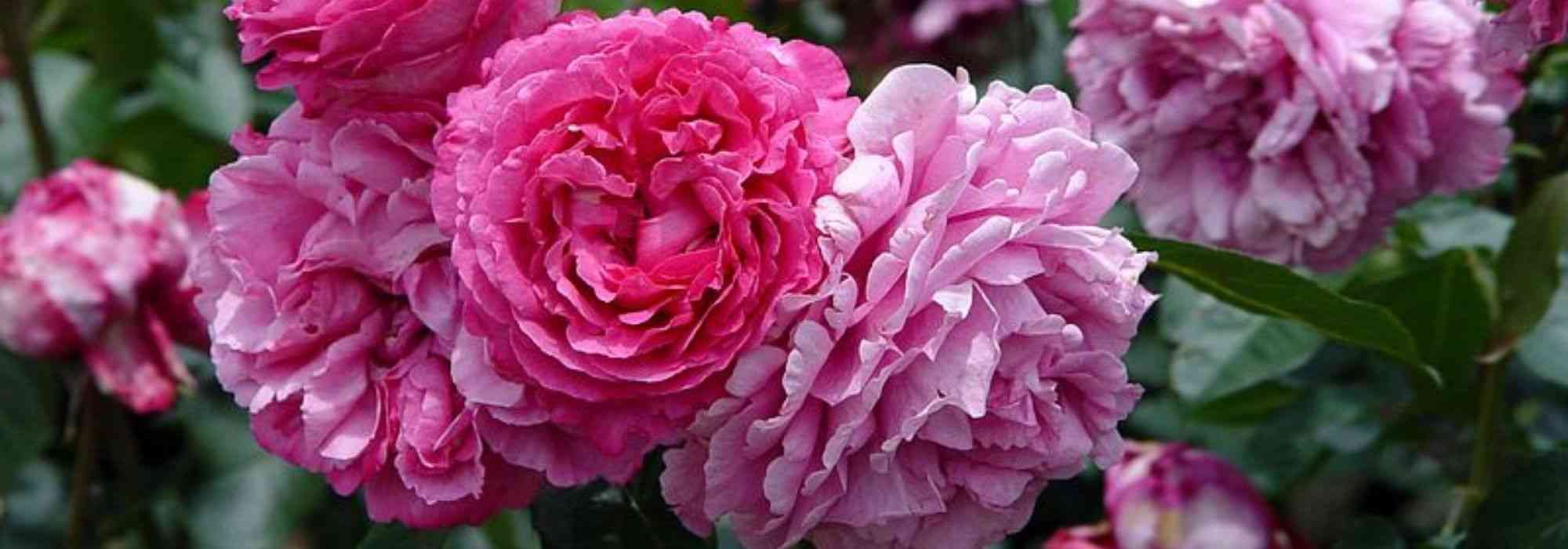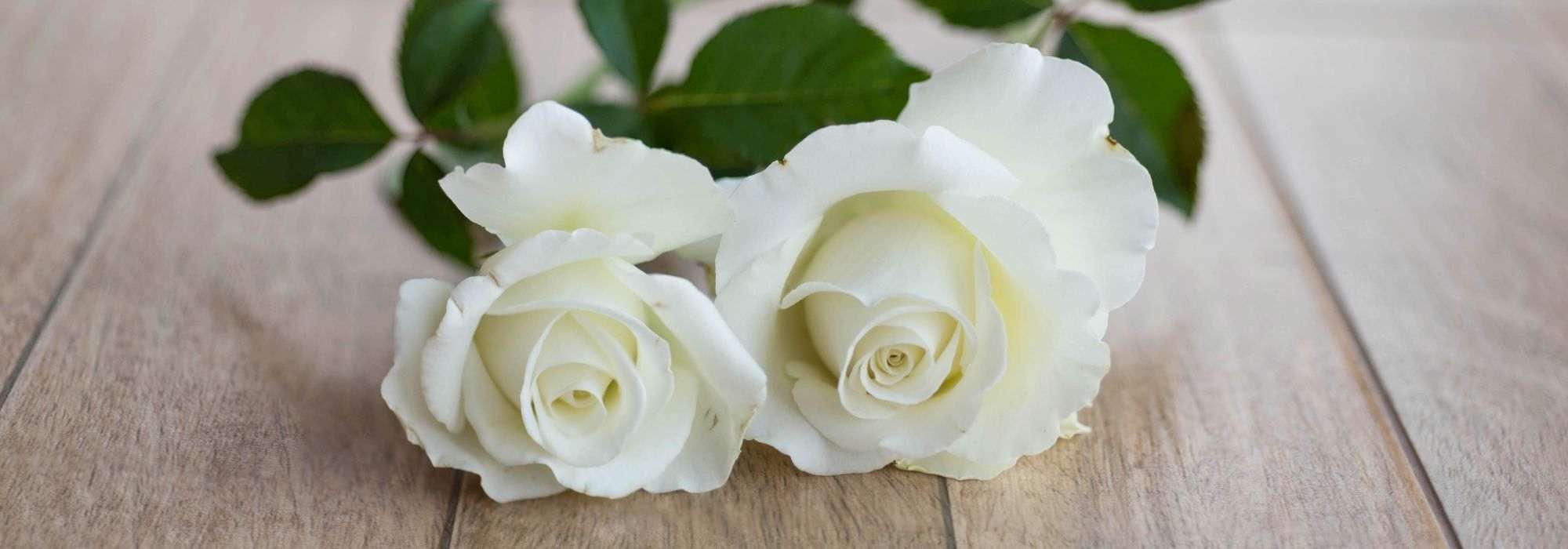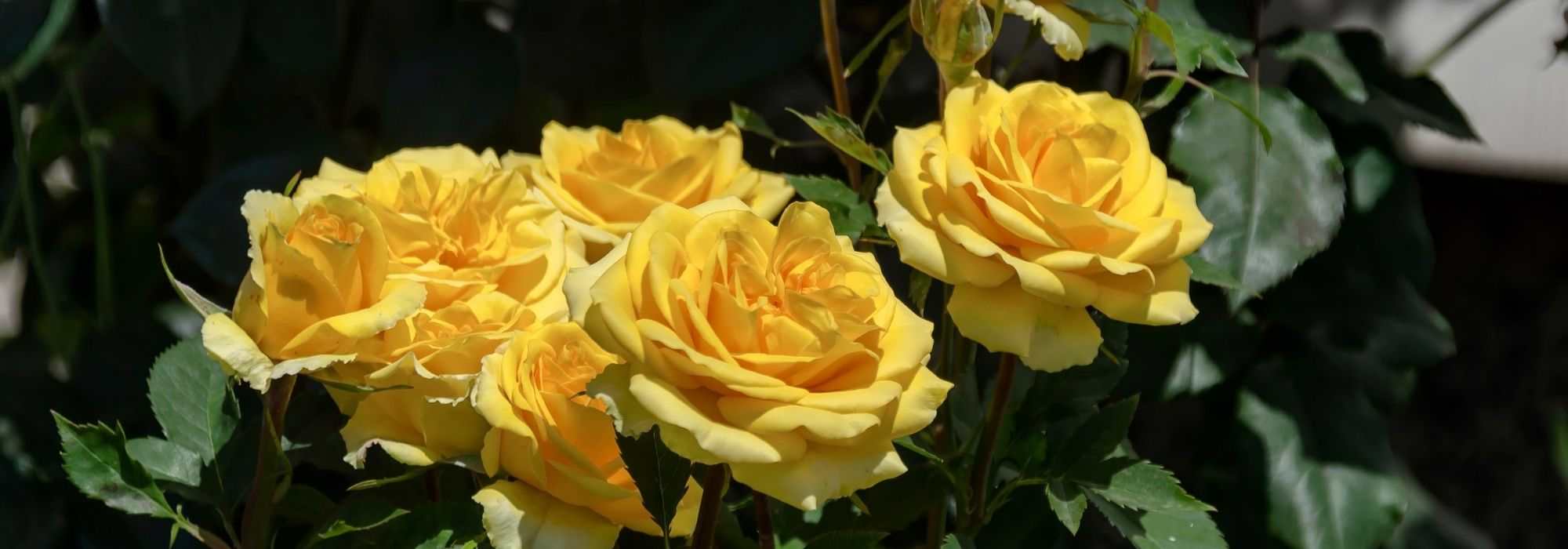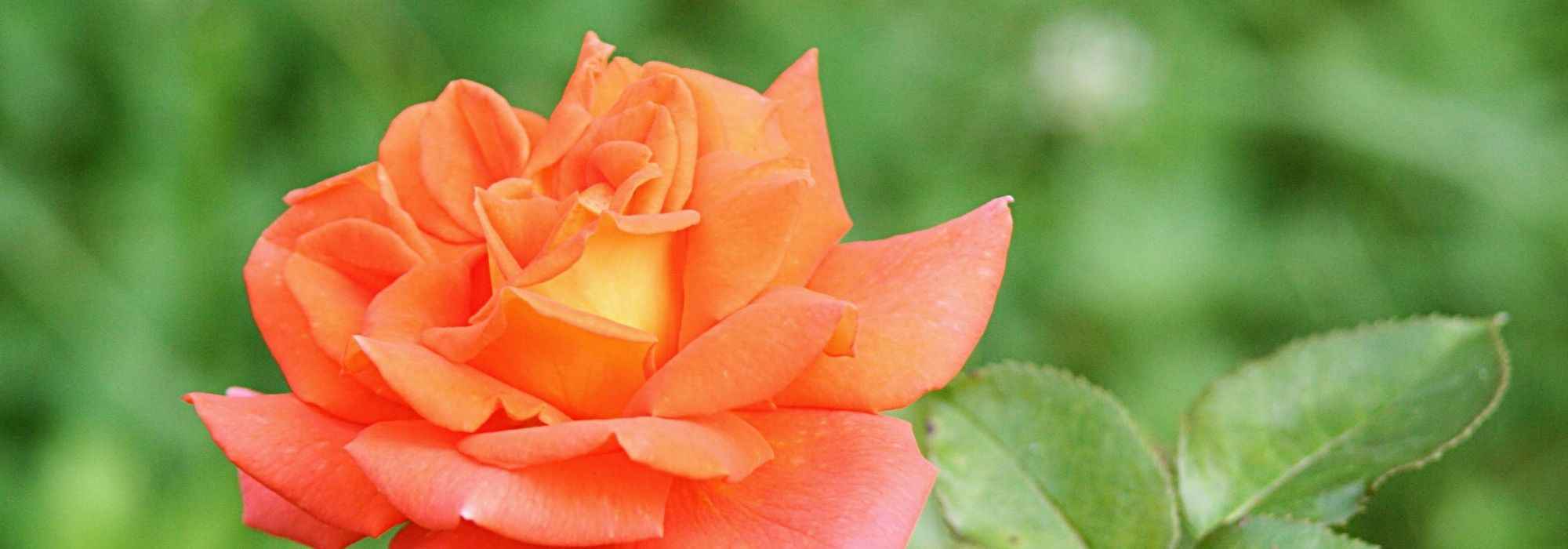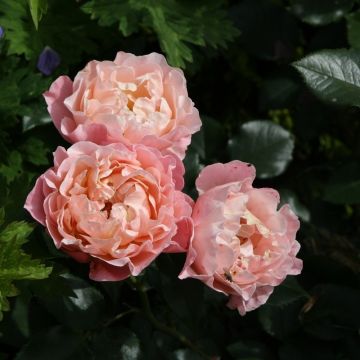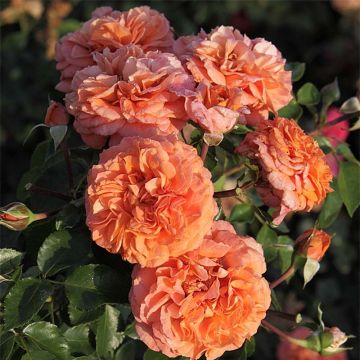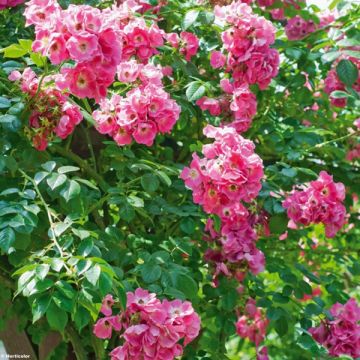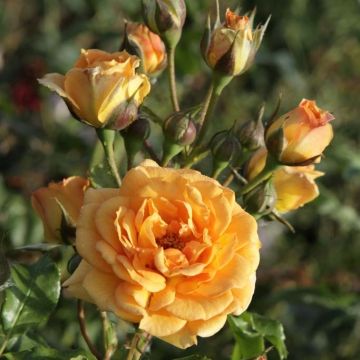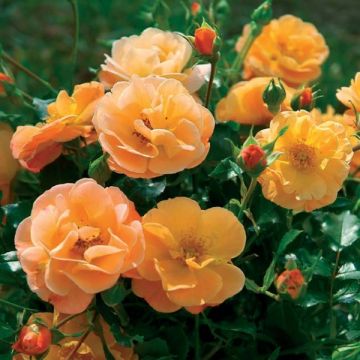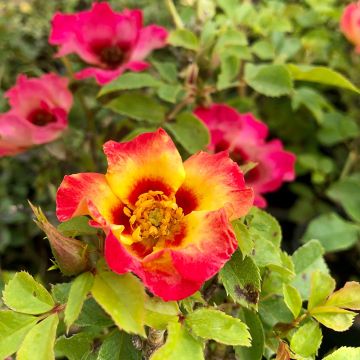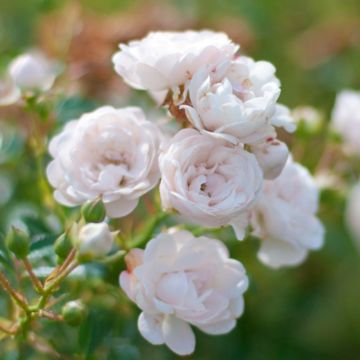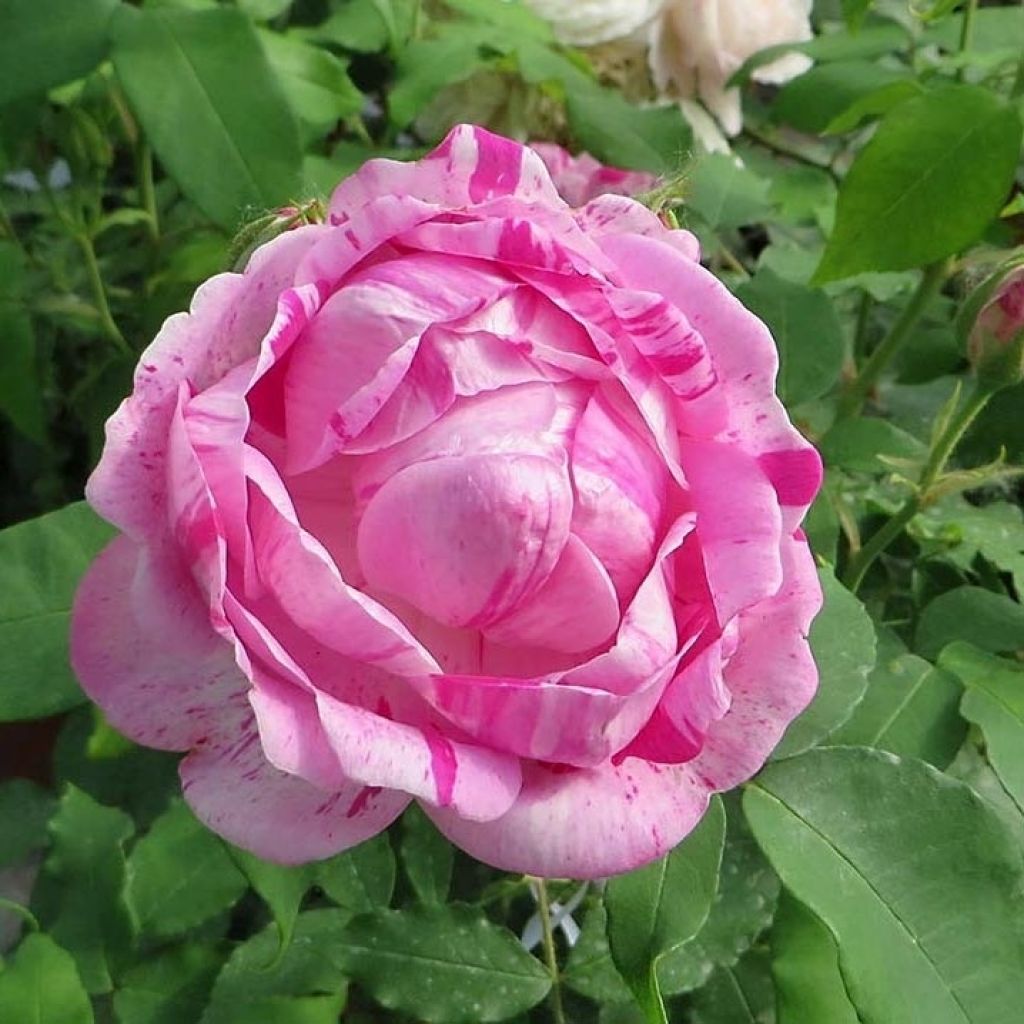

Rosa gallica Gros Provins Panaché BIO
Rosa gallica Gros Provins Panaché BIO
Rosa gallica Gros Provins Panaché BIO
Gallic Rose, French Rose
Special offer!
Receive a €20 voucher for any order over €90 (excluding delivery costs, credit notes, and plastic-free options)!
1- Add your favorite plants to your cart.
2- Once you have reached €90, confirm your order (you can even choose the delivery date!).
3- As soon as your order is shipped, you will receive an email containing your voucher code, valid for 3 months (90 days).
Your voucher is unique and can only be used once, for any order with a minimum value of €20, excluding delivery costs.
Can be combined with other current offers, non-divisible and non-refundable.
Home or relay delivery (depending on size and destination)
Schedule delivery date,
and select date in basket
We guarantee the quality of our plants for a full growing cycle, and will replace at our expense any plant that fails to recover under normal climatic and planting conditions.
Description
The organic 'Gros Provins Panaché' Rose Bush is a plant grown organically, selected for the richness of its petals in essential oils, usually intended for the perfume industry. It is a mutation of the robust rosa gallica officinalis, from which it has inherited this delicious fragrance reminiscent of rose candies. On this bush with a flexible habit, almost devoid of prickles and clad in disease-free light green foliage, beautiful double and plump flowers bloom, variegated with white, cream, and different shades of pink. This flowering is not very recurrent, but it is abundant and prolonged in June. All roses called galliques are excellent bush plants, both hardy, healthy, carefree, and full of charm.
The Rosa x gallica Gros Provins Panaché is a descendant of the Rosa gallica, the French or Provins rose, a plant already celebrated by the Greek poet Anacreon in the 6th century BC. Native to central and southern Europe, the original gallic rose was probably brought to Gaul by the Roman conquest. This Gros Provins Panaché variety was obtained in France by Fontaine in 1866.
'Gros Provins Panaché', with vigorous growth, forms a bushy and flexible rose that reaches about 1.50m (5ft) in height and 1.20m (4ft) in width. Its stems are almost devoid of prickles. Its foliage, cut into small pointed leaflets, is light green and remarkably healthy. This variety generally blooms abundantly in June for several weeks. Depending on the climate and growing conditions, it sometimes reblooms at the end of summer, but in a more sporadic and random manner. Its roses measure 7cm (3in) in diameter and are in the form of double and globular cups. Grouped in numerous bouquets, they bloom on branches at least one year old. Their colour evolves over the days, and they are all different: the petals are randomly striated with cream white, pale pink almost white, on a background of pink to violet that darkens from purple to violet. At full bloom, the roses sometimes reveal a small cluster of stamens. The fragrance of the flowers is more or less pronounced depending on the temperature and time; this is typical of old roses. The deciduous foliage falls in late autumn.
The Organic 'Gros Provins Panaché' Rose Bush, like other Gallic roses, is a sturdy shrub with a rich history. These are shrubs like 'Versicolor', 'Belle Isis', 'Gros Provins Panaché', or 'Charles de Mills' that stand guard in old abandoned gardens, while many others have surrendered. Recognized as one of the best variegated roses, Gros Provins Panaché contributes to the exuberance of summer flowering shrub beds, landscape hedges, mixed with mock oranges, abelias, or lilacs. In perennial beds, it wonderfully accompanies perennial geraniums, panicle phlox, catmints, or lavender.
If you have enough space, English, Old or Shrub Roses are magnificent planted in groups of three plants. They will grow together to form a single opulent bush that will bloom even more generously.
Rosa gallica Gros Provins Panaché BIO in pictures
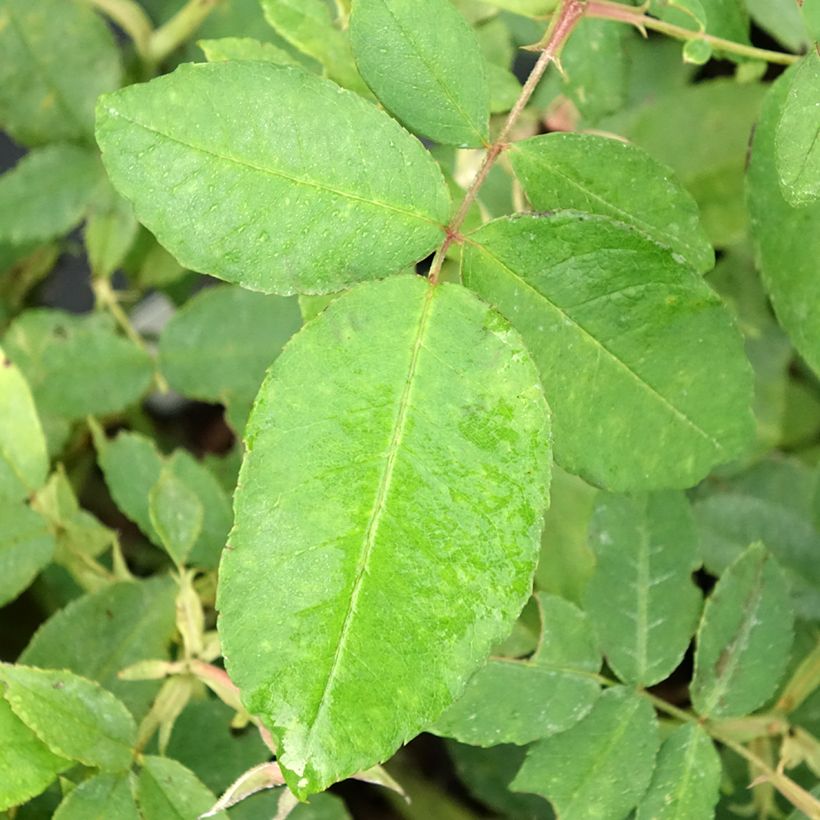

Plant habit
Flowering
Foliage
Botanical data
Rosa
gallica
Gros Provins Panaché BIO
Rosaceae
Gallic Rose, French Rose
Cultivar or hybrid
Planting and care
To plant your old variegated Gros Provins Organic rose, prepare your soil to a depth of 40 cm3 (2.44 in3) by crumbling the soil and adding a base amendment such as bonemeal at the bottom of the planting hole. Position your young plant, covering the graft point with 3cm (1in) of soil, then fill in and water generously to remove any air pockets. During dry weather, regular watering for a few weeks is necessary to promote root development. Also, remember to provide your rose with special rose fertilizer that stimulates flowering.
Planting period
Intended location
Care
Planting & care advice
This item has not been reviewed yet - be the first to leave a review about it.
Similar products
Haven't found what you were looking for?
Hardiness is the lowest winter temperature a plant can endure without suffering serious damage or even dying. However, hardiness is affected by location (a sheltered area, such as a patio), protection (winter cover) and soil type (hardiness is improved by well-drained soil).

Photo Sharing Terms & Conditions
In order to encourage gardeners to interact and share their experiences, Promesse de fleurs offers various media enabling content to be uploaded onto its Site - in particular via the ‘Photo sharing’ module.
The User agrees to refrain from:
- Posting any content that is illegal, prejudicial, insulting, racist, inciteful to hatred, revisionist, contrary to public decency, that infringes on privacy or on the privacy rights of third parties, in particular the publicity rights of persons and goods, intellectual property rights, or the right to privacy.
- Submitting content on behalf of a third party;
- Impersonate the identity of a third party and/or publish any personal information about a third party;
In general, the User undertakes to refrain from any unethical behaviour.
All Content (in particular text, comments, files, images, photos, videos, creative works, etc.), which may be subject to property or intellectual property rights, image or other private rights, shall remain the property of the User, subject to the limited rights granted by the terms of the licence granted by Promesse de fleurs as stated below. Users are at liberty to publish or not to publish such Content on the Site, notably via the ‘Photo Sharing’ facility, and accept that this Content shall be made public and freely accessible, notably on the Internet.
Users further acknowledge, undertake to have ,and guarantee that they hold all necessary rights and permissions to publish such material on the Site, in particular with regard to the legislation in force pertaining to any privacy, property, intellectual property, image, or contractual rights, or rights of any other nature. By publishing such Content on the Site, Users acknowledge accepting full liability as publishers of the Content within the meaning of the law, and grant Promesse de fleurs, free of charge, an inclusive, worldwide licence for the said Content for the entire duration of its publication, including all reproduction, representation, up/downloading, displaying, performing, transmission, and storage rights.
Users also grant permission for their name to be linked to the Content and accept that this link may not always be made available.
By engaging in posting material, Users consent to their Content becoming automatically accessible on the Internet, in particular on other sites and/or blogs and/or web pages of the Promesse de fleurs site, including in particular social pages and the Promesse de fleurs catalogue.
Users may secure the removal of entrusted content free of charge by issuing a simple request via our contact form.
The flowering period indicated on our website applies to countries and regions located in USDA zone 8 (France, the United Kingdom, Ireland, the Netherlands, etc.)
It will vary according to where you live:
- In zones 9 to 10 (Italy, Spain, Greece, etc.), flowering will occur about 2 to 4 weeks earlier.
- In zones 6 to 7 (Germany, Poland, Slovenia, and lower mountainous regions), flowering will be delayed by 2 to 3 weeks.
- In zone 5 (Central Europe, Scandinavia), blooming will be delayed by 3 to 5 weeks.
In temperate climates, pruning of spring-flowering shrubs (forsythia, spireas, etc.) should be done just after flowering.
Pruning of summer-flowering shrubs (Indian Lilac, Perovskia, etc.) can be done in winter or spring.
In cold regions as well as with frost-sensitive plants, avoid pruning too early when severe frosts may still occur.
The planting period indicated on our website applies to countries and regions located in USDA zone 8 (France, United Kingdom, Ireland, Netherlands).
It will vary according to where you live:
- In Mediterranean zones (Marseille, Madrid, Milan, etc.), autumn and winter are the best planting periods.
- In continental zones (Strasbourg, Munich, Vienna, etc.), delay planting by 2 to 3 weeks in spring and bring it forward by 2 to 4 weeks in autumn.
- In mountainous regions (the Alps, Pyrenees, Carpathians, etc.), it is best to plant in late spring (May-June) or late summer (August-September).
The harvesting period indicated on our website applies to countries and regions in USDA zone 8 (France, England, Ireland, the Netherlands).
In colder areas (Scandinavia, Poland, Austria...) fruit and vegetable harvests are likely to be delayed by 3-4 weeks.
In warmer areas (Italy, Spain, Greece, etc.), harvesting will probably take place earlier, depending on weather conditions.
The sowing periods indicated on our website apply to countries and regions within USDA Zone 8 (France, UK, Ireland, Netherlands).
In colder areas (Scandinavia, Poland, Austria...), delay any outdoor sowing by 3-4 weeks, or sow under glass.
In warmer climes (Italy, Spain, Greece, etc.), bring outdoor sowing forward by a few weeks.

































